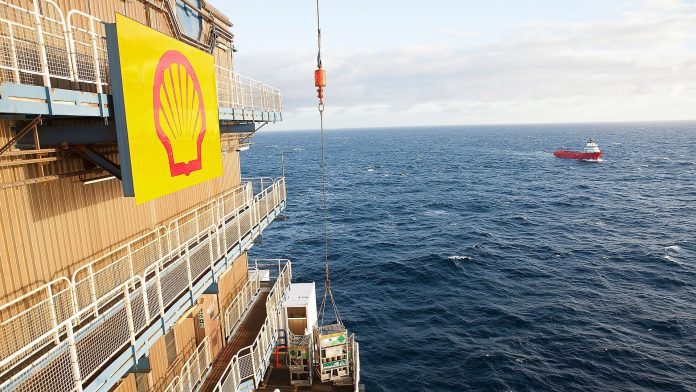Multinational oil and gas company Royal Dutch Shell has handed new industrial IoT monitoring contracts to a pair of local IoT suppliers, in the form of Rotterdam-based scale-up TWTG and Amsterdam-based startup Hiber. TWTG has a deal to supply LoRaWAN-based vibration sensors to Shell’s refinery in Pernis, outside of Rotterdam, the largest oil refinery in Europe. Hiber has signed a global contract to supply satellite-based well-integrity monitoring solutions.
TWTG said it has so far delivered 100 vibration sensors from its NEON line to Shell’s Pernis Refinery; the new LoRaWAN units will be used for condition-based asset monitoring, to provide early warnings of bearing-faults on pumps and other rotating equipment, with a view to reduce downtime and eliminate hazardous situations.
The company reckons LoRaWAN, the non-cellular low-power wide-area (LPWA) technology typically used in private industrial setups, is “the industrial IoT network of the future”. Nadine Herrwerth, managing director of TWTG, commented: “We are delighted that Shell has placed their trust in TWTG for the delivery of our products and we will work tirelessly to demonstrate that we should be the supplier of choice for any other LoRaWAN devices to come.”
Felix Fikke, instrumentation project engineer at Shell Pernis, said: “These devices will change the way that we monitor our pumps and allow us to react faster. We can measure root-mean-square (RMS) velocity as well as fast fourier transform (FFT), and all this is possible with a LoRaWAN sensor, which is fantastic.”
Meanwhile, Hiber’s solution, called HiberHilo and launched last year, uses satellite connectivity. Hiber claims to have launched the world’s first global IoT satellite network, in 2016, and recently secured €26 million in EU and private investment. Its agreement with Shell is for monitoring the condition of the company’s oil wells, and enables all Shell entities and subsidiaries to use the product.
Hiber said oil and gas firms can measure real-time well temperature and pressure for up to 250 remote and unconnected offshore wellheads within a radius of 10 kilometres. The solution has been installed at Shell operations in the North Sea, and is being considered in Southeast Asia, the Middle East, and Africa, it said. Shell will look to reduce travel to and from wells in remote locations, and gain additional data about well performance and integrity.
Hiber said the solution will increase safety at offshore wells, and will help with decommissioning of oil and gas wells. A statement described the challenge to preserve the surrounding area after decommissioning. “The process begins with a one- or two-year diagnostics period before the actual decommission. During this period, engineers gather data about the condition of the well so they can make a plan that eliminates risk after the decommission,” it said.
“Engineers need a lot of data during the diagnostics period, but not all of the data can be gathered automatically. To get the information they need, oil and gas companies send teams of engineers out into the field to gather the data. Shell understood the hassles of decommissioning, and knew there had to be a better, safer way. And when the company’s engineers heard about HiberHilo, they figured it was worth testing the solution.”
It added: “Crew trips are expensive: they can cost anywhere more than $10,000 per trip, depending on the location and the size of the crew. The trips also present a safety risk, which is especially sensitive in an industry committed to a zero-accident rate. And besides the expense and the safety hazards. Because the measurements are done by humans on an infrequent basis, there’s more room for error and a longer response time to any well-integrity issues.”
Speaking of the new deal, Coen Jansen, chief strategy officer at Hiber, commented: “HiberHilo is a simple solution to help oil and gas companies improve safety, optimize operations, and reduce their environmental footprint. We’re thrilled to be working with Shell toward a technologically cleaner future. Hiber’s mission is connecting everything everywhere to deliver productivity and sustainability in global industrial IoT.”
Hiber also announced a joint venture around the HiberHilo product with solution provider WTS Energy, which sells digital change solutions to the oil and gas sector. WTS Energy, with 1,250 consultants in 18 countries, will help Hiber address the oil and gas market.
Janssen said: “A well blowout can be a disaster in terms of safety, environmental impact and commercial impact. Wellhead monitoring can be complex, time-consuming, and expensive… HiberHilo is an out-of-the-box solution which provides an innovative and affordable subscription service to ensure continuous wellhead monitoring, even in the remotest locations on Earth.”
Frederik Rengers, chief executive at WTS Energy, said: “We work in many remote locations and well integrity monitoring comes with many logistical challenges. We are all in the middle of the energy transition and it is important to keep the oil and gas industry safe and protect the environment during this time. Satellite-enabled well integrity monitoring of remote wells is a key to keeping the existing wells environmentally safe.”

